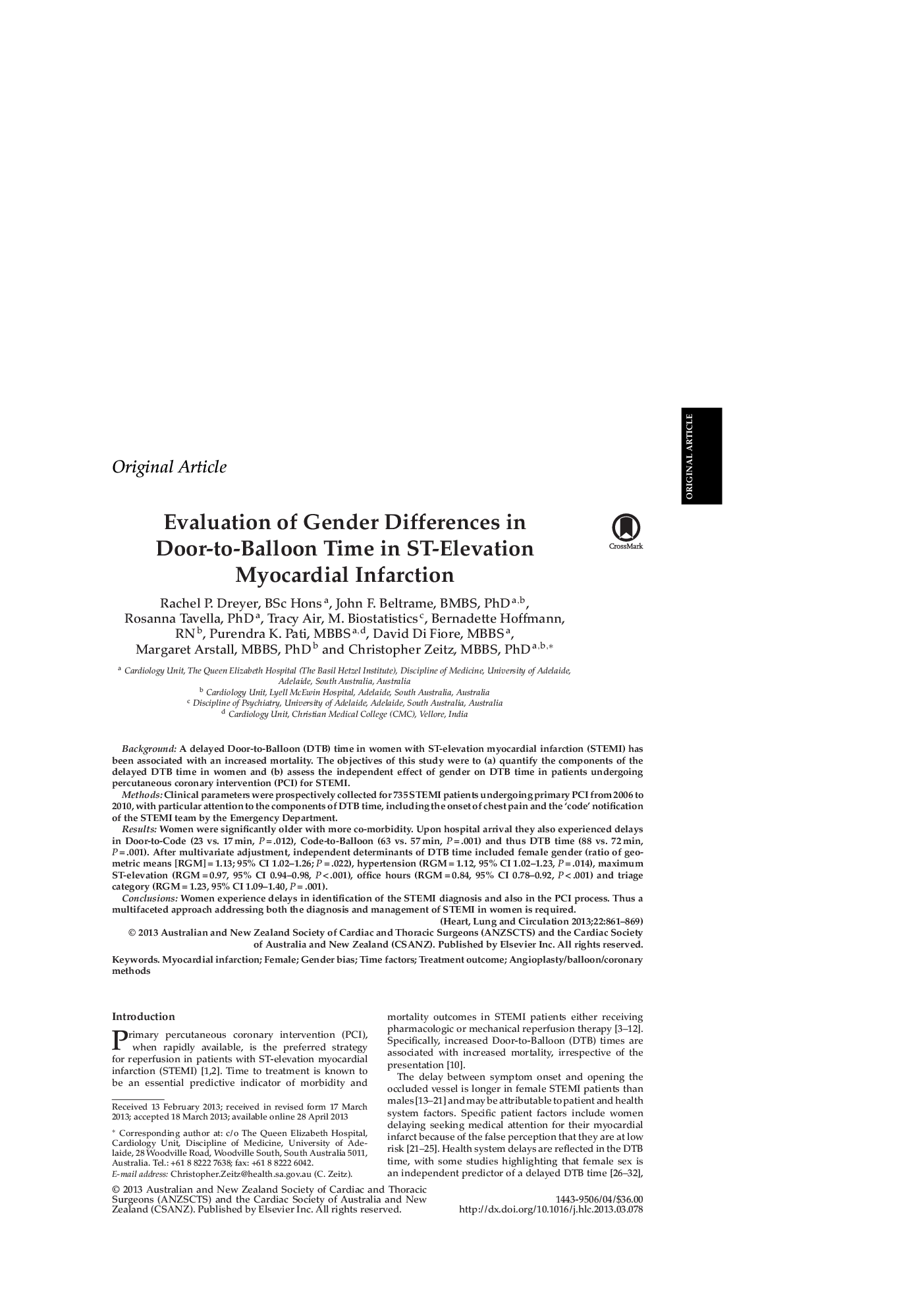| Article ID | Journal | Published Year | Pages | File Type |
|---|---|---|---|---|
| 2917765 | Heart, Lung and Circulation | 2013 | 9 Pages |
BackgroundA delayed Door-to-Balloon (DTB) time in women with ST-elevation myocardial infarction (STEMI) has been associated with an increased mortality. The objectives of this study were to (a) quantify the components of the delayed DTB time in women and (b) assess the independent effect of gender on DTB time in patients undergoing percutaneous coronary intervention (PCI) for STEMI.MethodsClinical parameters were prospectively collected for 735 STEMI patients undergoing primary PCI from 2006 to 2010, with particular attention to the components of DTB time, including the onset of chest pain and the ‘code’ notification of the STEMI team by the Emergency Department.ResultsWomen were significantly older with more co-morbidity. Upon hospital arrival they also experienced delays in Door-to-Code (23 vs. 17 min, P = .012), Code-to-Balloon (63 vs. 57 min, P = .001) and thus DTB time (88 vs. 72 min, P = .001). After multivariate adjustment, independent determinants of DTB time included female gender (ratio of geometric means [RGM] = 1.13; 95% CI 1.02–1.26; P = .022), hypertension (RGM = 1.12, 95% CI 1.02–1.23, P = .014), maximum ST-elevation (RGM = 0.97, 95% CI 0.94–0.98, P < .001), office hours (RGM = 0.84, 95% CI 0.78–0.92, P < .001) and triage category (RGM = 1.23, 95% CI 1.09–1.40, P = .001).ConclusionsWomen experience delays in identification of the STEMI diagnosis and also in the PCI process. Thus a multifaceted approach addressing both the diagnosis and management of STEMI in women is required.
